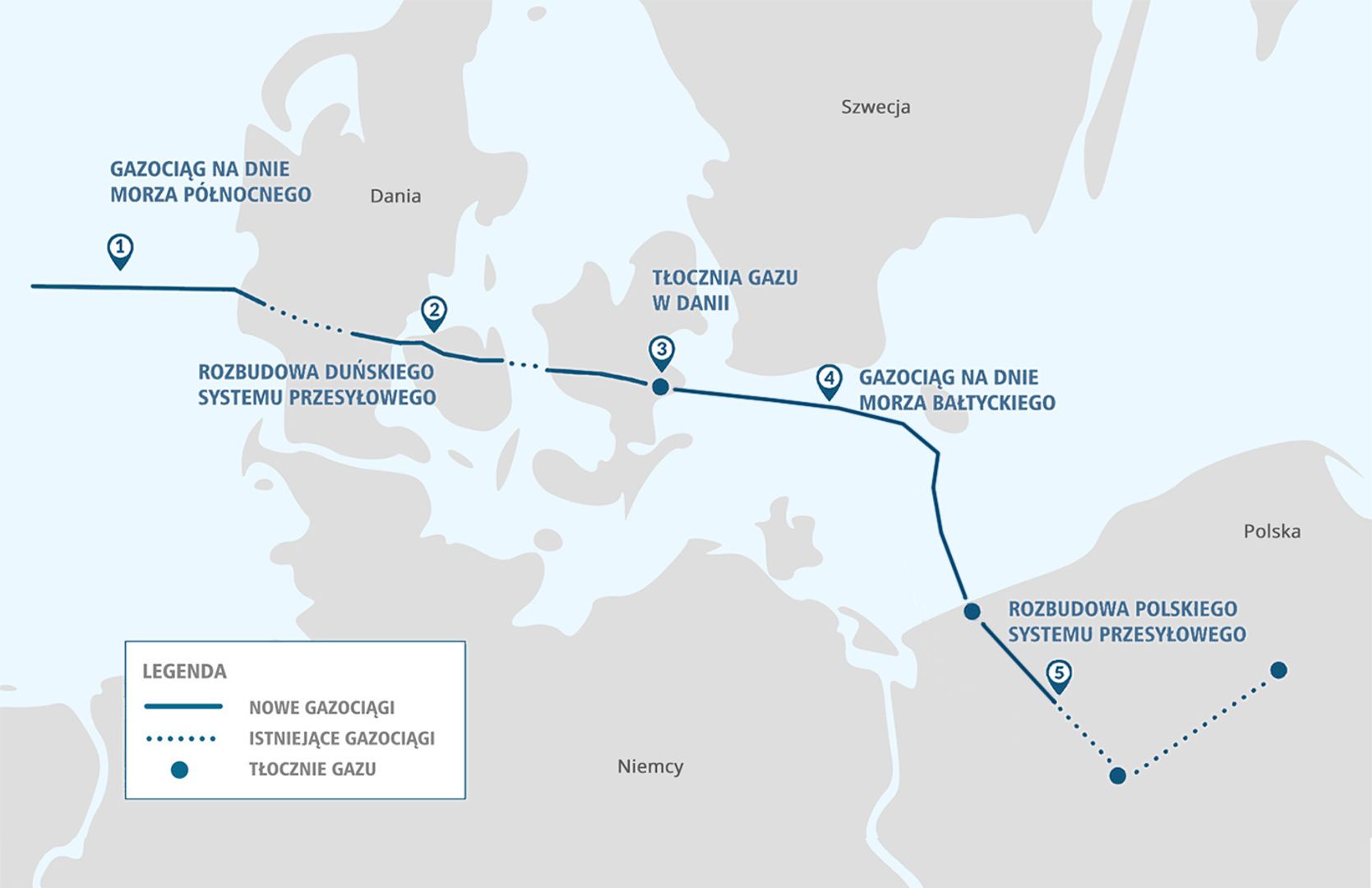Baltic Pipe
6.67

Overview
The Baltic Pipe, launched on September 27, 2022, is a key pipeline system connecting Norway, Denmark, and Poland, with an annual capacity of 10 billion cubic meters. The project, aimed at diversifying gas supplies to Poland and neighboring countries, was initiated by the Polish Oil and Gas Company (PGNiG) and the Danish operator Energinet. Plans to import gas from Norway had been considered since 1991, and an initial pipeline project from 2001 was ultimately abandoned after a change in government. In 2016, new steps were taken to advance the Baltic Pipe initiative. Key decisions were made in 2018, including the signing of the construction agreement and securing funding from the European Union. The project received support through grants from the Connecting Europe Facility and was regarded as crucial for the energy security of the region. The Baltic Pipe consists of five main components, including subsea pipelines on the beds of the North Sea and the Baltic Sea, gas compressor stations, and expansions of transmission systems in Poland and Denmark. An interesting aspect of the project is its status as a "Project of Common Interest" (PCI), highlighting its importance for Europe’s integrated energy market. Within a year of its launch, the pipeline achieved record transmission volumes, maximizing efficiency and fulfilling its primary role as a new corridor for natural gas supplies to the region.
Location
2025 Wizytor | All Rights Reserved